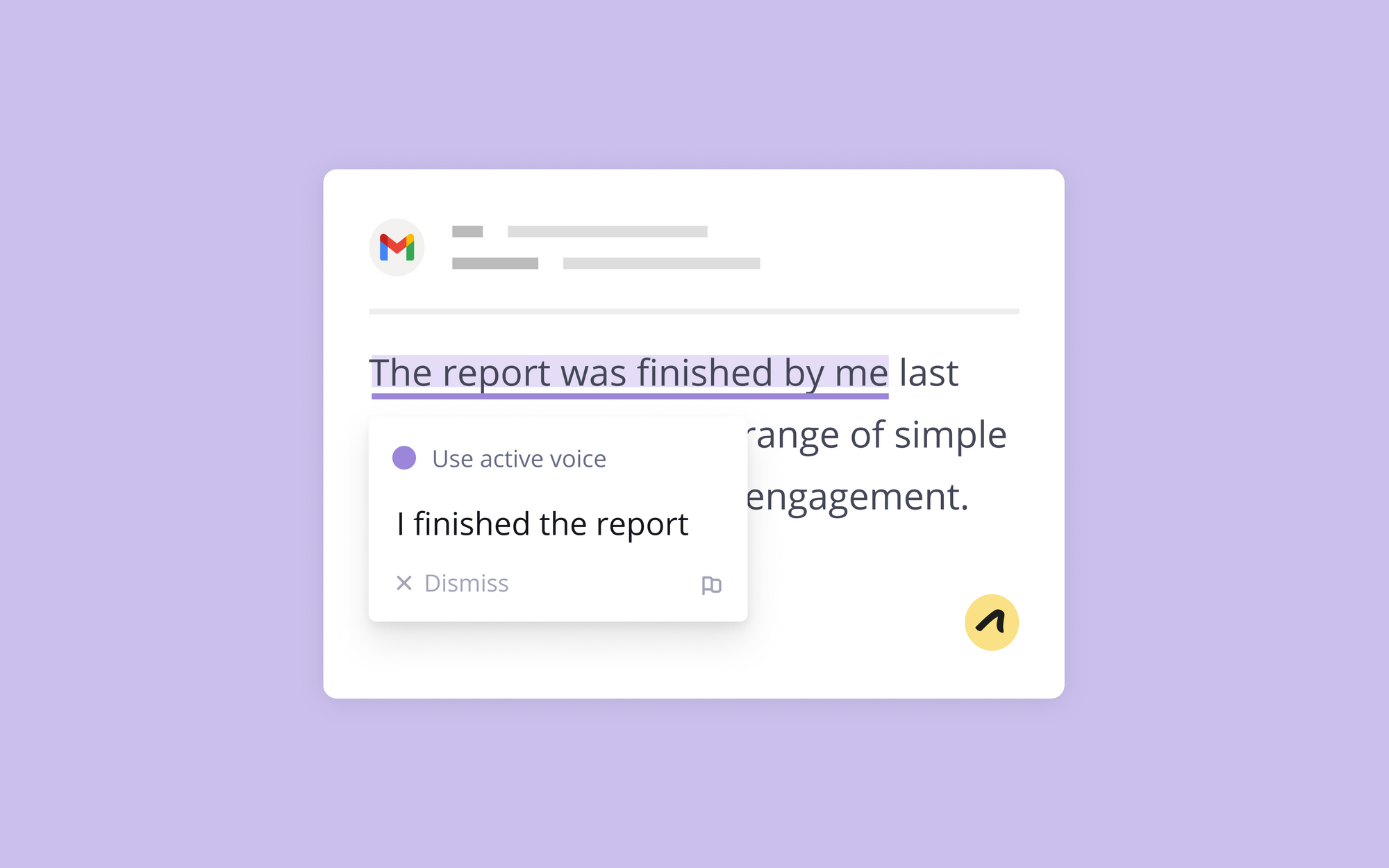How to rewrite a sentence in active voice
Learn how to convert passive voice to active voice in 3 easy steps

You may have heard the argument that active voice is better than passive voice. In most cases, this is true. Active voice can make your writing clearer, shorter, and punchier. Heck, even lawyers and academics are now encouraged to use it thanks to Plain Language policies.
In that case, how do you change passive voice to active?
Some writing guides will use terms like "past participles" and "gerunds" to answer this question. While these are handy for students and linguists, they're probably of no interest to you.
Instead, we've put together three mostly jargon-free steps on how to rewrite a sentence in active voice (plus a link to a tool that can do it all for you).
The 3-step rewrite process
Step 1: Identify passive voice
First, we need to figure out if a phrase is written in passive voice. We've discussed the differences between passive and active voice before, but put simply:
- Active voice = subject of the sentence performs the verb action
- Passive voice = subject of the sentence receives the verb action
Let's look at an example.
The car was purchased by Olivia.
The subject of this sentence is the car. We can tell the car is receiving an action because it "was purchased". It didn't actually do anything. If you can't tell, look out for the word "by" after the verb—it's a good sign that a sentence is written in passive voice.
Step 2: Change word order
Imagine we want Olivia to be the focus of our sentence, not the car. We'll need to move her name to the front of the sentence, and move the car to the end.
Olivia was purchased by the car.
Our sentence still makes sense grammatically, but not logically. Cars aren't that advanced (yet). This brings us to step 3.
Step 3: Remove unnecessary words
Active sentences tend to be shorter than passive ones because they require less words (like a form of the verb "to be"). In this particular case, we can get rid of the words "was" and "by".
Olivia purchased the car.
Voilà! We have an active sentence.
Things to be mindful of
Obviously, not every passive sentence will neatly fit the three steps we just outlined. Here are some cases to look out for:
The sentence is missing details
Sometimes, a passive sentence won't have a "doer". That's because we don't know who did the thing, or it's not necessary to share that detail. You'll notice academics and journalists will use this tactic to maintain an objective tone.
The parcels were delivered on time.
If we want to make this sentence active, we'll need to add details about who or what made the delivery.
The parcels were delivered on time [by Fedex].
Fedex delivered the parcels on time.
The verb needs changing
So far, every example we've listed contained a regular verb. Regular verbs don't need to be changed when switching between passive and active voice.
Irregular verbs don't always have this luxury. Take the verb "write", for example:
The lyrics were written by Adele.
Adele wrote the lyrics.
Clearly, "Adele written the lyrics" would be incorrect. So we use the simple past form of the word instead.
Use the same tense
The English language has three main tenses: past, present, and future. A passive sentence can be written in any of these. For example:
The cows are milked every morning.
The cows were milked yesterday.
The cows have been milked today.
The cows will be milked tomorrow.
The cows would have been milked today.
When you change a sentence to active voice, ensure you use the same tense. For example, the first sentence could be rewritten as "The farmer milks the cows every morning".
Get Outwrite to rewrite for you
There may be times when you've unintentionally used passive voice, or you can't figure out how to change it. Outwrite can help you in two ways:
1. Use our passive voice detector

One of Outwrite's most popular Pro features is our passive voice detector. It will underline any phrases it thinks are passive and suggest an active voice alternative.
2. Use our paraphrasing tool

Alternatively, you can rewrite sentences instantly with our AI paraphrasing tool. Just double-click on or highlight a sentence, and Outwrite will generate a list of suggestions.
You can pick from six rewriting goals: improve, shorten, expand, restructure, casual, and formal. We'd suggest using the "restructure" goal if you want to fix a passive sentence.
Don't have an Outwrite account? Sign up for free!

